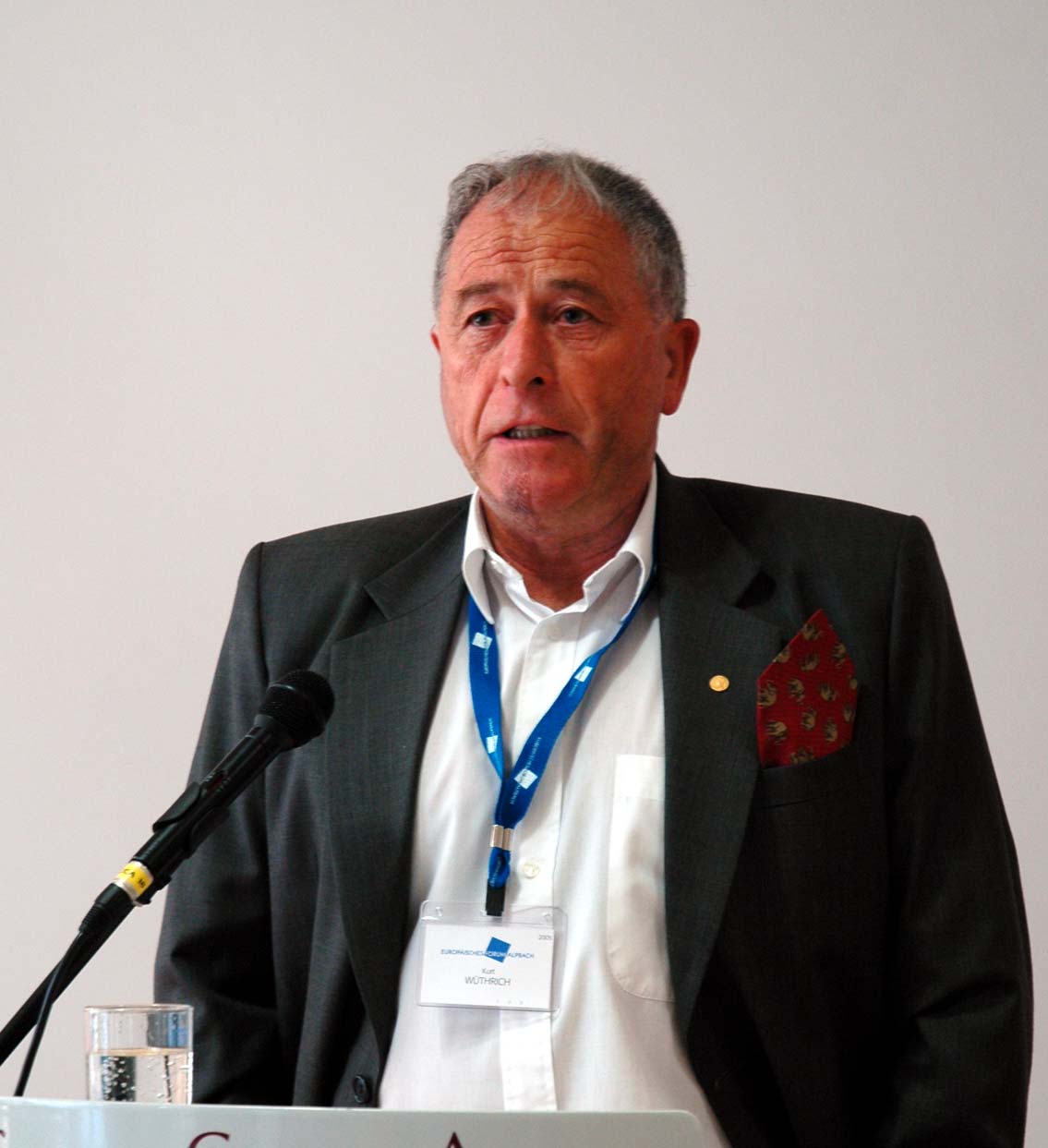- Kurt Wüthrich
Infobox Scientist
name = Kurt Wüthrich

birth_date = birth date|1938|10|04
birth_place =Aarberg ,Switzerland
residence =
nationality =Switzerland
field =Chemistry ,physics ,mathematics
work_institutions =ETH Zürich
Scripps InstituteDuke University
alma_mater =Universität Bern Universität Basel
doctoral_advisor =Silvio Fallab
doctoral_students =
known_for =
prizes =Nobel Prize in Chemistry (2002)
footnotes =Kurt Wüthrich (born
October 4 ,1938 ) is a Swiss chemist and Nobel Chemistry laureate.Biography
Born in
Aarberg ,Switzerland , Wüthrich was educated inchemistry ,physics , andmathematics at theUniversity of Berne before pursuing hisPh.D. under the direction ofSilvio Fallab at theUniversity of Basel , awarded in 1964. He continued post-doctoral work with Fallab for a short time before leaving to work at theUniversity of California, Berkeley for two years from 1965 withRobert E. Connick . That was followed by a stint working withRobert G. Shulman at the Bell Telephone Laboratories inMurray Hill, New Jersey from 1967 to 1969.Wüthrich returned to Switzerland, to
Zürich , in 1969, where he began his career there at theETH Zürich , rising to Professor of Biophysics by 1980. He currently maintains a laboratory both at theETH Zürich and atThe Scripps Research Institute , inLa Jolla, California .Career
During his graduate studies Wüthrich started out working with
electron paramagnetic resonance spectroscopy and the subject of his Ph. D thesis was "the catalytic activity ofcopper compounds in autoxidation reactions". During his time as apostdoc in Berkeley he began working with the newly developed and related technique ofnuclear magnetic resonance spectroscopy to study the hydration of metal complexes. When Wüthrich joined the Bell Labs, he was put in charge of one of the firstsuperconducting NMR spectrometers, and started studying the structure and dynamics of proteins. He has pursued this line of research ever since.After returning to Switzerland, Wüthrich collabrated with among others nobel laureate
Richard R. Ernst on developing the first 2 dimensional NMR experiments, and established thenuclear Overhauser effect as a convenient way of measuring distances within proteins. This research later led to the complete assignment and of resonances for among others the bovine pancreatic trypsin inhibitor andglucagon .He was awarded the
Louisa Gross Horwitz Prize fromColumbia University in 1991 and half of theNobel Prize in Chemistry in 2002 for "his development ofnuclear magnetic resonance spectroscopy for determining the three-dimensional structure of biological macromolecules in solution". He taught atDuke University as Handler Memorial Lecturer in2007 .External links
* [http://www.mol.biol.ethz.ch/groups/wuthrich_group/wu_people/wkurt Kurt Wuthrich faculty page] at
ETH Zürich
* [http://www.vega.org.uk/video/programme/115 'An Interview with Kurt Wuthrich] Freeview video by the Vega Science Trust
* [http://www.nmr.ch/ Computer Aided Resonance Assignment (CARA)] , freeware developed in the group of Kurt Wuthrich at the ETH Zürich
* [http://www.cumc.columbia.edu/horwitz/ The Official Site of Louisa Gross Horwitz Prize]
* [http://www.scripps.edu/mb/wuthrich/people/kw/kw.html/ The Scripps Research Institute -- Faculty Profile: Kurt Wuthrich]
Wikimedia Foundation. 2010.
